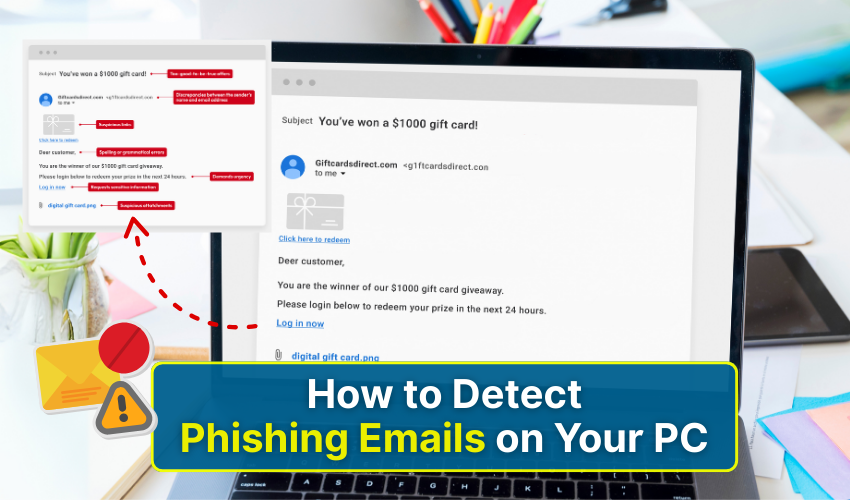How to detect phishing emails on your PC

How to Detect Phishing Emails on Your PC
Phishing emails has been one of the most common threats to email security today. These scam emails often appear legitimate but are designed to steal personal information, financial data, or login credentials. Detecting phishing emails early is crucial to maintaining your email security and keeping your PC safe. This guide provides practical steps for phishing detection to help you save from falling victim to scam emails.
1. Examine the Sender's Email Address
One of the first steps in phishing detection is checking the sender’s email address. Scam emails mimic legitimate companies but contain subtle misspellings or extra characters which help get identified. For instance, an email from "support@amaz0n.com" is a phishing email rather than an official email from Amazon. Always compare the sender’s email with official contact information to strengthen your email security.
2. Look for Suspicious Links
Phishing emails mostly contain links that redirect a device user to malicious websites. Hover your mouse once over the link without clicking in order to look at its genuine URL the link may finally redirect you to.
3. Check for Urgent or Threatening Language
Many scam emails try to make you panic or act quickly. They use phrases like "Your account will be suspended" or "Immediate action required." Real companies rarely rush you, so seeing this kind of pressure is a strong warning sign of a phishing email.
4. Inspect Attachments Carefully
Attachments in phishing emails can carry malware that harms your PC. Only open files from trusted sources, and if an email looks suspicious, scan the attachment with antivirus software first. This helps keep your PC and email safe.
5. Verify Email Content and Grammar
Scam emails often have spelling mistakes, grammar errors, or odd formatting. While a real email might have the occasional slip, it usually won’t be full of them. Take a close look at the email, and if you notice these signs, be cautious before doing anything.
6. Use Two-Factor Authentication (2FA)
Using two-factor authentication makes your accounts more secure. Even if someone gets your password through a scam email, 2FA can stop them immediately from accessing your account.
7. Employ Email Security Tools
Most email services have spam filters and phishing detection already built in. Make sure these are turned on so suspicious emails get flagged right away. You can also use antivirus software or browser extensions to block scam emails. Keep these tools updated to stay protected.
8. Confirm Requests Through Alternate Channels
If an email asks for sensitive information, always double-check it through an official source. Contact the company regarding the same directly via their trusted phone number or their official website instead of replying to the email. This simple step helps you confirm what’s real and keeps you from falling for scams.
9. Educate Yourself and Others
Learn the common tricks used in phishing scams and share that knowledge with coworkers or family. When you know what to watch for, it’s easier to spot scams quickly and prevent them from causing harm.
Conclusion
Knowing how to spot phishing emails is important for anyone on a PC. Using two-factor authentication, and staying aware of scams adds extra safety. Stay careful, and your emails and personal information will stay protected.
